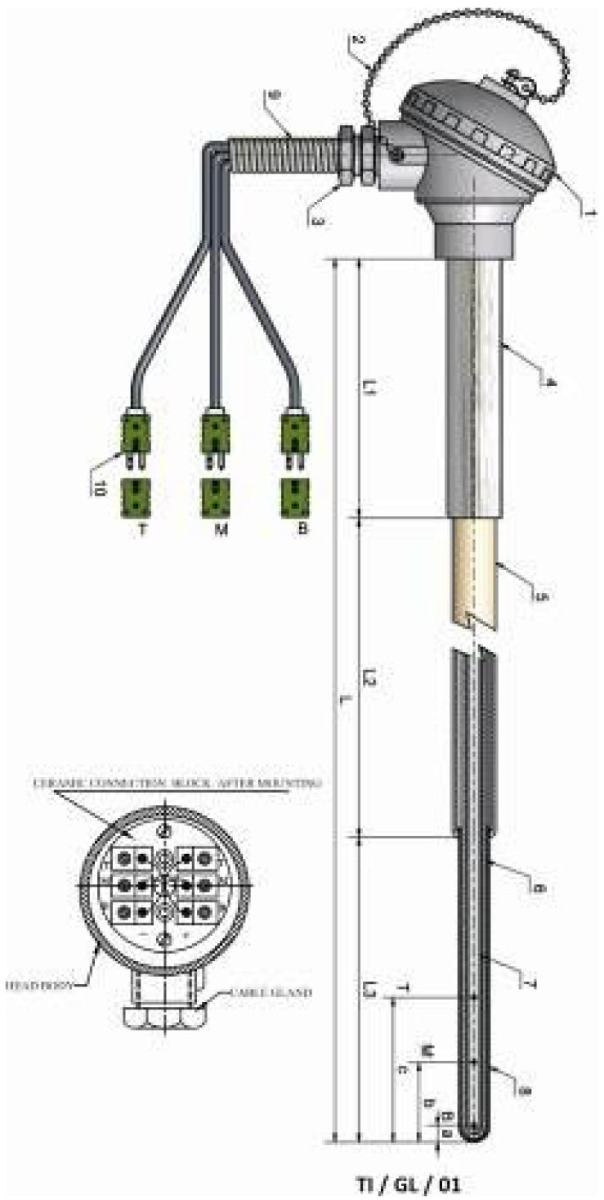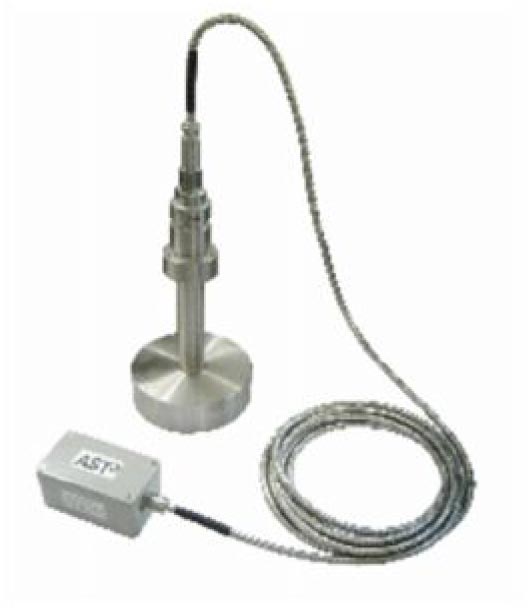- Home
- About
- Products
- Contact Temperature Sensors
- Cables & Wires
- Mineral Insulated Cables
- Nickel & Thermocouple Alloy
- Industrial Heaters
- Heating Cables and Mats
- Non Contact Temperature Sensors
- Industrial and R&D Furnaces
- Temperature Calibrators
-
Circulating Chiller
- Services
-
Special Products
- Thermal Profiling System
- Industries
- Resources
- Contact Us
- Shop
Accurate temperature measurement for glass industry
In this article, we will discuss about the importance of accurate temperature measurement at different segments of glass manufacturing process in whole area of Glass Industry (Float/Sheet, Container Glass, Table ware, Opal, Special Glass etc)..
The glass manufacturers always have concerns to improve the quality of products and efficiency of process while decreasing the manufacturing cost. These are areas which temperature measurement can play significant role to achieve to such goals.
By considering the dependence of the viscosity on the glass temperature it is obvious that any change in thermal uniformity will result in many problems in the subsequent forming process. For reaching to best performance in chemical and thermal homogeneity of glass, the accurate reading of temperature of different part of glass making process is vital, as we know that any changes in the temperature of glass can affect the quality of glass and temperature is a key parameter to measure and then control the combustion system which means the saving in energy consumption.
The temperature measuring can done by thermocouples where temperature measure directly in contact of molten glass (platinum thimble immersion thermocouples) or by thermocouples installation in the roof of furnace or distributor etc and measuring the atmosphere temperature. Then another technology is using of radiation pyrometers.
The thermocouples with platinum thimble immerses in the molten glass, so very precisely can read the accurate temperature of the glass. The accuracy of temperature measured by platinum thimble thermocouple enables glass makers to exactly know the real temperature of glass.
In this case thermocouple measures the temperature when in contact to media whose temperature is to be measured and as this media is molten glass the situation is critical as temperature is more than 1400 deg C & molten glass can contaminate the material in direct contact with it. To overcome this problem platinum thimble is used at the contact end of thermocouple to improve the life of the thermocouple.
Thimbles made of special platinum alloy containing 10% Rhodium with small% of Zirconium oxide or yttrium oxide (as grain stabilizer), are developed specially for the application in glass industries.
These materials offer significantly improved performance over conventional platinum and its alloys. It is a new class of materials and has optimized it for special applications:
- Highstrength with good ductility in the high temperature range (up to 1700°C).
- Excellentweld ability while the strength is
- Exceptional corrosion resistance and a more stable microstructure over longer service
These characteristics allow for longer service lives for the individual components and permit the precious metals to be used more economically, for instance through reduced wall thicknesses. The higher strength of the material also has a stabilizing effect on the equipment manufactured from it. Strengthening components of e. g. molybdenum, ceramics or refractory metals thus become effectively redundant. The inclusion of finely distributed zirconia as a dispersion impedes grain growth to a temperature just below the melting point. Due to the modified, finer microstructure, it is considerably less sensitive to corrosion processes along the grain boundaries than comparable materials. This ensures better corrosion resistance.
Tri-level Thermocouples:
There are special designs for the thermocouple used in fore hearths of the furnace; the outer diameter is reduced to increase response time and protected with platinum coating. The temperature at different level of molten glass are varying, the Tri-level thermocouple, the three thermocouple sensors mounted in a single assembly, resulting in a tri-level thermocouple and are used for providing temperature profile of the molten glass, (bottom layer, middle layer, upper layer).

High-speed IS machines operated in triple or even quadruple gob require a more intense glass cooling in the forehearth and talking about NNPB production means special consideration on temperature measuring with trilevel thermocouples, where the maximum tolearance of weight should be -/+1 percent and the precise tools for measuring temperature became inevitable.
The ceramic tube thermocouples which measure the atmosphere temperature are also good solution to control the temperature of process,however,comparing to platinum thimble thermocouple are less precise. This is due to the fact that temperature of atmosphere of the furnace or forehearth can affected easily with the power of burners especially when the flame touch the thermocouple, while the real temperature of molten glass will be somehow different than atmosphere.
The radiation pyrometers are another solution using for long time in glass manufacturing in furnace, distributor, forehearth channel as well as for measuring the surface temperature of glass in float glass production, bulb and tube production etc. Tempsens fibre optic pyrometers are specially designed for glass industry application which provide high performance with low maintenance.
The sensor part and other electronic are connected through fiber optic cable, this allows to keep the electronic assembly a way from the high temperature.
Comparing the thermocouples and fibre optic pyrometers, it needs to mention that thermocouple have higher accuracy and are more precise.
In following paragraphs, we shortly discuss about the application of thermocouples in certain part of glass manufacturing process:
Furnace Crown and Regenerator Crown
The arc of the melting chamber where solid batch material is heated up to produce molten glass is called crown. Over heating of the crown may cause of early erosion of crown refractory and if the temperature is low it can affect the melting efficiency and increase the fuel consumption that is why to measure and control the correct temperature of the crown is very important.
The highest temperature in melting furnace is at crown which may is more than 1600 deg C, so thermocouple with dual protection HWT (Heavy Wall Thickness) ceramic sheets are our recommendation to increase the service life of the thermocouple. At crown there are number of points to measure in center, right and left , the same kind of assemblies can be used for regenerative crown.
Furnace Bottom
Bottom Blocks are the costliest part of a melting tank. It becomes very much important to measure accurate temperature as even difference of 2-3 deg can lead to more fuel consumption of the furnace and then also the bottom temperature is important factor which can affect the forming process. It is difficult for a thermocouple to withstand whole campaign life of a furnace, TEMPSENS thermocouple has achieved this goal in many projects. If the thermocouple to be used in glass with direct contact to molten glass Platinum thimbled thermocouple are used, or some furnace has hole or a pocket for thermocouple then thermocouplewith re-crystallized alumina sheet are used.
Forehearth
The Glass Conditioning process takes place in the Working End (the Distributor) as well as in the Forehearth where the glass cooling is achieved by removing the heat from molten glass along the forehearth channel.
A glass forehearth control system includes temperature sensing system and a control system. Temperature sensing system includes an arrangement of pre-positioned temperature sensors. Simplex and triplex (tri level) thermocouple consist of an assembly of a bottom, middle & top thermocouples for sensing the vertical temperature profile of the molten glass at a fixed location. The output signals from these temperature sensors are received by controllers of the control system which the provide control signals and regulate the operation of heat input devices and the cooling input devices. It is very important that thermocouple output and controller’s calibration must be accurate, reliable and repeatable.
The temperature control in the forehearth channel represents a valuable tool guaranteeing the required thermal uniformity of the glass melt. The temperature is measured by thermocouples or radiometric thermometers. Three triplex thermocouples are used with the aim to obtain consistent and reliable information of the temperature distribution in the cross section of the last part of the equalizing zone. An index characterizing the thermal efficiency of the forehearth channel is then calculated on the basis of the output of these nine points of temperature measurement. For instance, its value should exceed 90 % when the glass containers are made by the NNPB process.
Another area which TEMPSENS is dealing is GLASS LEVEL PROBE, for glass level control made with Platinum alloy probe. Inside and outside protection is with recrystallized alumina tubes. These probes are available in different type of hangers as per customer requirement with very good service life.


